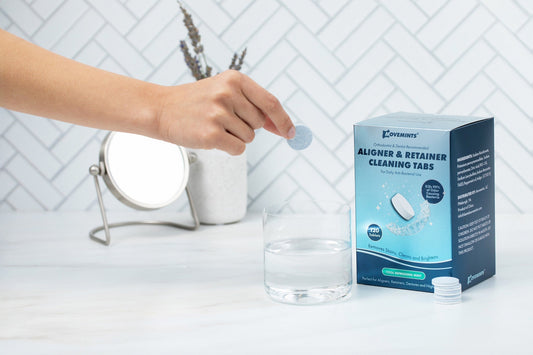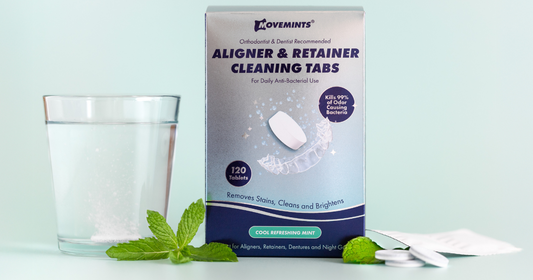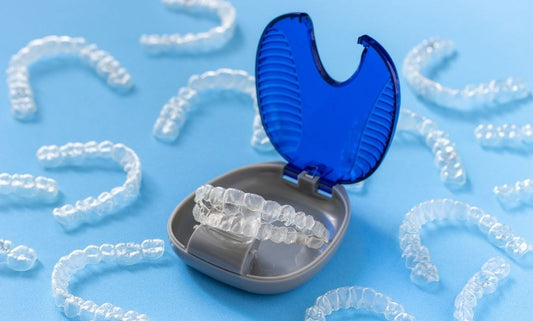Invisalign Alternative: 6 Options for Straighter Teeth
Want straighter teeth but not sure Invisalign is the right fit? You're not alone. Many people are looking for alternatives, whether it's due to cost, lifestyle, or specific needs. In this article, we'll explore five great options that might be a better fit for you.
Here's what we'll cover:
- What is Invisalign?
- Why do I need Invisalign alternatives?
- What are the top 5 Invisalign alternatives?
- How to choose the best alternative for your smile?
And if you're already using clear aligners and struggling with those chewy things, check out Movemints. They're a game-changer for seating your trays comfortably.
What Is Invisalign?
Invisalign is a popular teeth-straightening treatment that uses clear, removable aligners. These aligners are custom-made to fit your teeth and gradually shift them into the desired position. Unlike traditional braces with brackets and wires, Invisalign is practically invisible, making it a popular choice for adults and teens who want a discreet way to straighten their teeth.
But Invisalign isn't the only way to achieve the smile of your dreams.
Why Do You Need Invisalign Alternatives?

Invisalign is great, but it's not for everyone. It might be tempting to jump on the Invisalign bandwagon, but hold your horses. There are plenty of reasons why exploring alternatives might be a smart move for you:
- Cost: Invisalign can be pricey, often ranging from $3,000 to $8,000. Alternatives like at-home aligners or certain types of braces can be significantly more affordable.
- Lifestyle: Invisalign requires commitment. You need to wear the aligners for 20-22 hours a day and take them out for eating and drinking. If you have a busy lifestyle or play sports, this can be a hassle. Alternatives like traditional braces are a "set it and forget it" solution.
- Treatment Severity: Invisalign is best for mild to moderate cases. If you have severe crowding or bite issues, traditional braces or other orthodontic appliances might be more effective.
- Comfort: While generally comfortable, Invisalign can cause some initial discomfort or soreness as your teeth begin to move. Some people may find alternatives like lingual braces (braces behind the teeth) more comfortable.
- Aesthetics: While discreet, Invisalign aligners are still noticeable up close. If you're looking for a truly invisible option, lingual braces might be a better choice.
Ultimately, the best way to straighten your teeth depends on your individual needs and circumstances. It's always a good idea to consult with an orthodontist to discuss your options and determine the best treatment plan for you.
What are the Top 6 Invisalign Alternatives?
So you've decided Invisalign treatment isn't the right fit for you. Now what? Don't worry, you've got options. The world of orthodontics has come a long way, and there are plenty of best Invisalign alternatives to straighten your teeth and achieve that confident smile. Let's explore five of the best:
1. Clarity Aligners
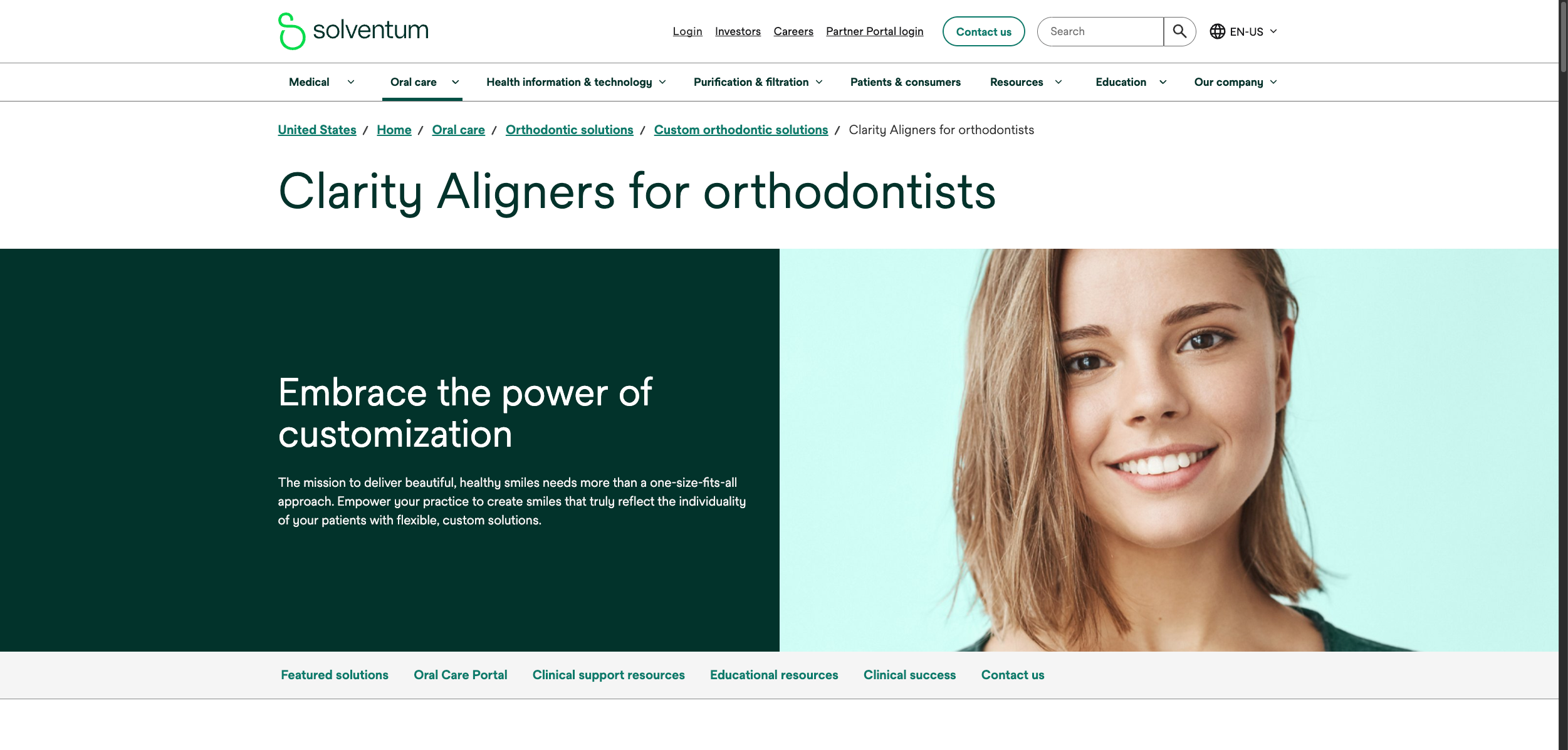
Clarity Aligners, developed by 3M, are a fantastic option for those seeking a discreet and effective orthodontic treatment. Dr. Dave, a respected voice in the field, speaks highly of them, and for good reason. Here's why they stand out:
- Advanced Material: Clarity Aligners are made from a proprietary multi-layer copolymer material that provides excellent clarity, stain resistance, and durability. This means they're less likely to yellow or become discolored over time, keeping your smile looking its best.
- Precise Tooth Movement: Clarity Aligners are designed to deliver precise and predictable tooth movement. They offer excellent control over various types of movements, including rotations, extrusions, and intrusions.
- Comfort and Fit: The aligners are designed with a smooth, comfortable trimline that reduces irritation and improves overall comfort.
- Efficient Treatment: Clarity Aligners can be an efficient way to straighten your teeth, often with comparable treatment times to Invisalign.
- Orthodontist-Driven: Clarity Aligners are administered by qualified orthodontists who create a personalized treatment plan and monitor your progress throughout your journey to a straighter smile.
How it works?
- Consultation: You'll start with a consultation with a qualified orthodontist who will examine your teeth and determine if Clarity Aligners are right for you.
- Digital Impressions: Your orthodontist will take digital impressions or molds of your teeth to create a 3D model.
- Treatment Plan: Using the 3D model, your orthodontist will map out a precise treatment plan, outlining the movements needed to achieve your desired smile.
- Custom Aligners: Clarity Aligners are custom-made based on your treatment plan. You'll receive a series of aligners, each designed to gradually shift your teeth.
- Wear and Monitoring: You'll wear each set of aligners for about two weeks, and your orthodontist will monitor your progress through regular checkups.
Pros
- Advanced Material: Clarity Aligners are made from a proprietary material that is clear, stain-resistant, and durable.
- Precise Tooth Movement: Clarity Aligners offer excellent control over tooth movement, leading to predictable results.
- Comfort and Fit: The aligners have a smooth trimline for increased comfort and reduced irritation.
- Efficient Treatment: Clarity Aligners can straighten teeth efficiently, often with similar treatment times to Invisalign.
- Orthodontist-Driven: Your treatment is overseen by a qualified orthodontist for personalized care and optimal results.
Cons
- Cost: Clarity Aligners may be comparable in cost to Invisalign, which can be a significant investment.
- Compliance: Like all clear aligner treatments, Clarity Aligners require consistent wear for successful outcomes. You'll need to be diligent about wearing them for the recommended 22 hours per day.
- Orthodontist Visits: Clarity Aligners require regular visits to your orthodontist for monitoring and adjustments, which may be inconvenient for some.
2. SureSmile
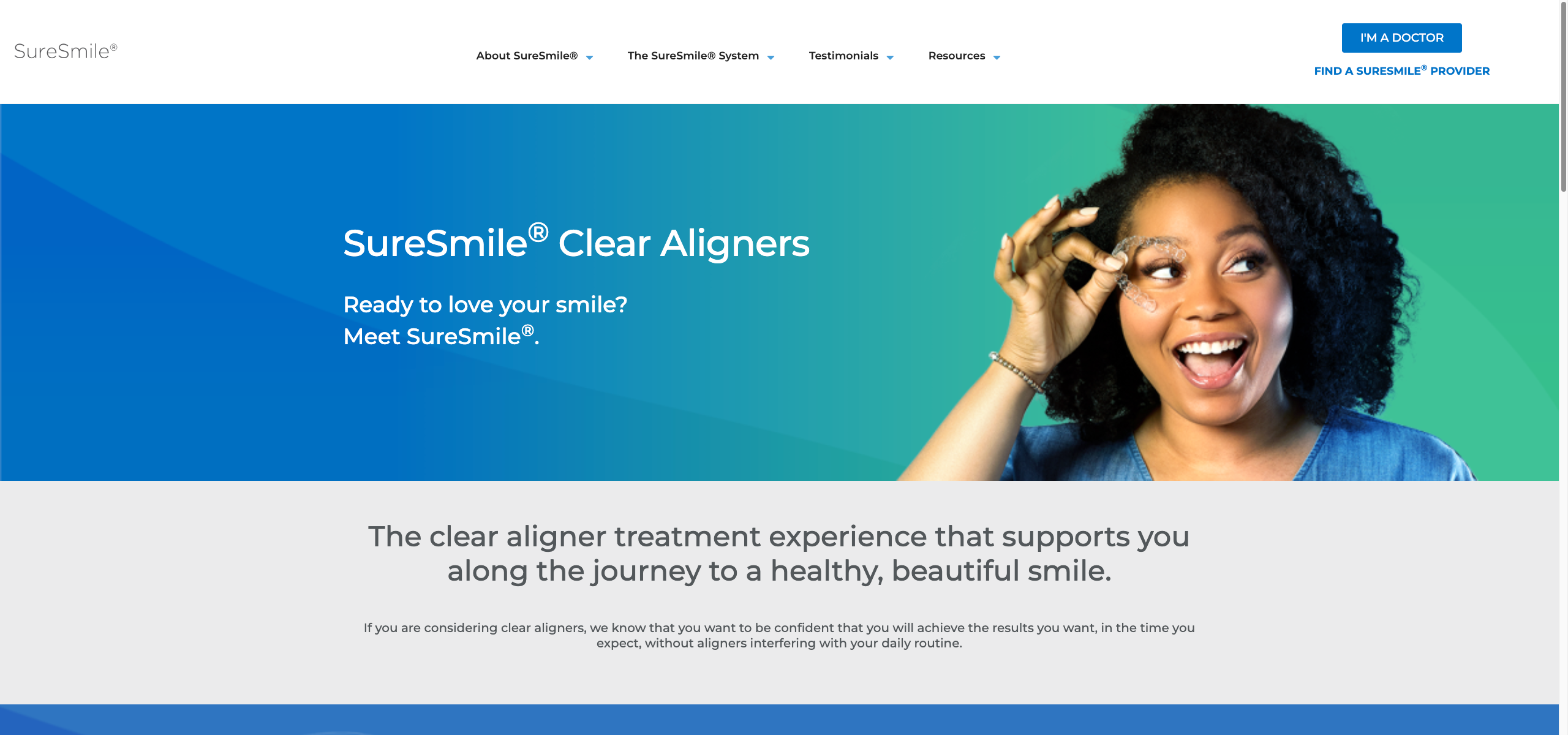
SureSmile orthodontic treatment is another excellent alternative to Invisalign, but with a twist. It combines the convenience of clear aligners with the precision of advanced technology.
How it works?
- Your orthodontist will take a 3D scan of your teeth to create a highly accurate model.
- SureSmile's software uses this model to plan your treatment and design your custom aligners with robotic precision.
- The aligners are made from a clear, comfortable material and are designed to apply gentle, consistent force to your teeth.
- You'll wear each set of aligners for about two weeks and visit your orthodontist for regular checkups.
Pros
- Precision: SureSmile's advanced technology allows for highly accurate tooth movement.
- Efficiency: Treatment time may be shorter compared to traditional braces or other clear aligners.
- Comfort: The aligners are designed for optimal comfort and fit.
- Personalized treatment: Your orthodontist oversees your treatment plan every step of the way.
Cons
- It may be more expensive than other alternatives: SureSmile's advanced technology may come at a higher cost.
- Requires orthodontist visits: You'll need to see your orthodontist for regular checkups and adjustments.
3. ClearCorrect
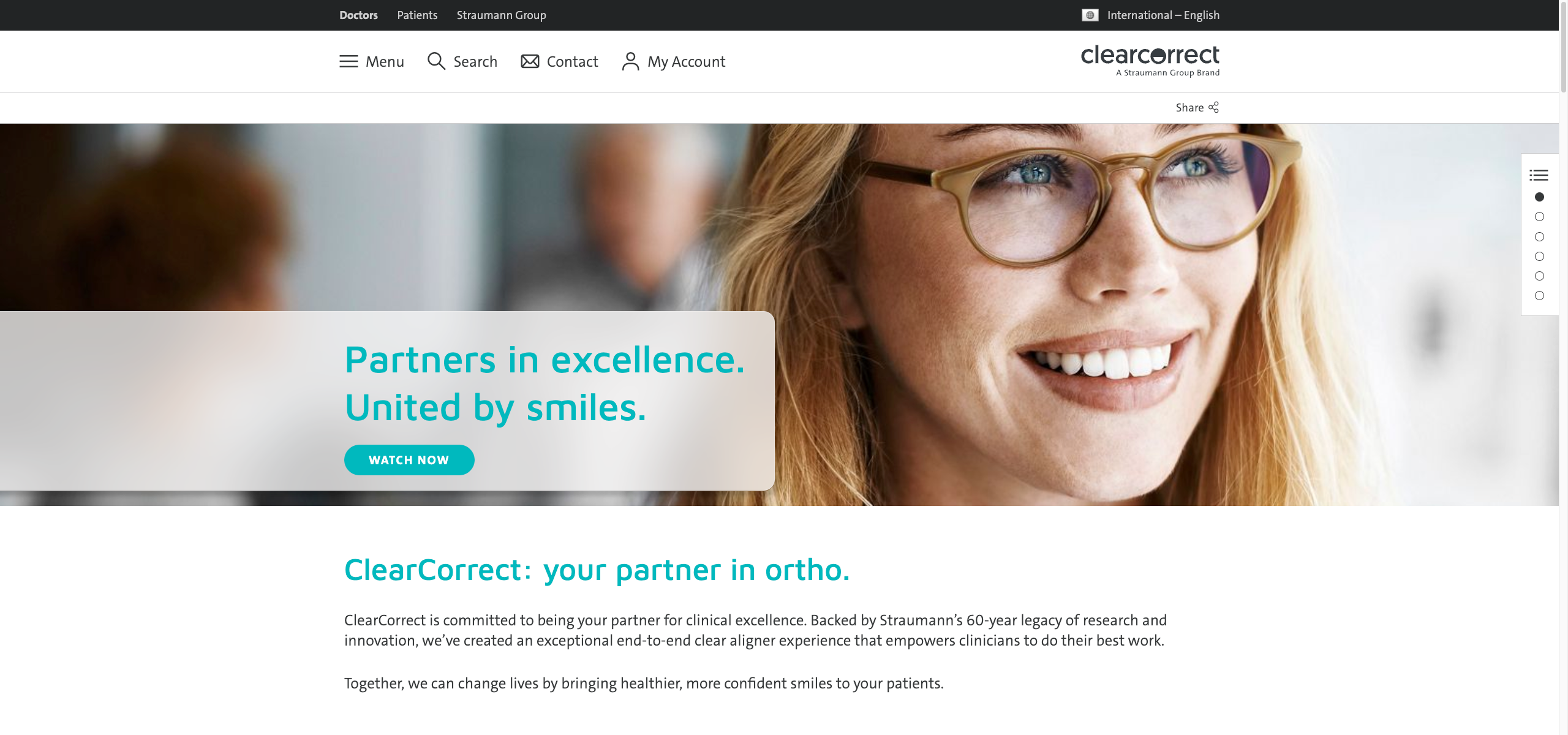
ClearCorrect is another strong customized treatment plan in the clear aligner arena for straight teeth. They offer a comparable product to Invisalign, often at a lower price point.
How it works?
- Your dentist or orthodontist will take digital impressions or molds of your teeth.
- ClearCorrect will use this data to create a series of custom-made aligners designed to gradually move your teeth.
- You'll wear each set of aligners for about two weeks, with regular check-ups at your dental office to monitor progress.
- ClearCorrect offers different treatment options, including unlimited aligners and a night-only option for those who prefer to wear aligners primarily while sleeping.
Pros
- Affordability: ClearCorrect often costs less than Invisalign.
- Discreet: The aligners are clear and virtually invisible.
- Flexibility: Offers different treatment options to suit your needs and lifestyle.
- Professional supervision: Your dentist or orthodontist oversees your treatment plan.
Cons
- May require refinements: May not achieve the same level of precision as Invisalign in some cases.
- Requires dental visits: You'll need to visit your dentist or orthodontist for check-ups and adjustments.
4. CandidPro
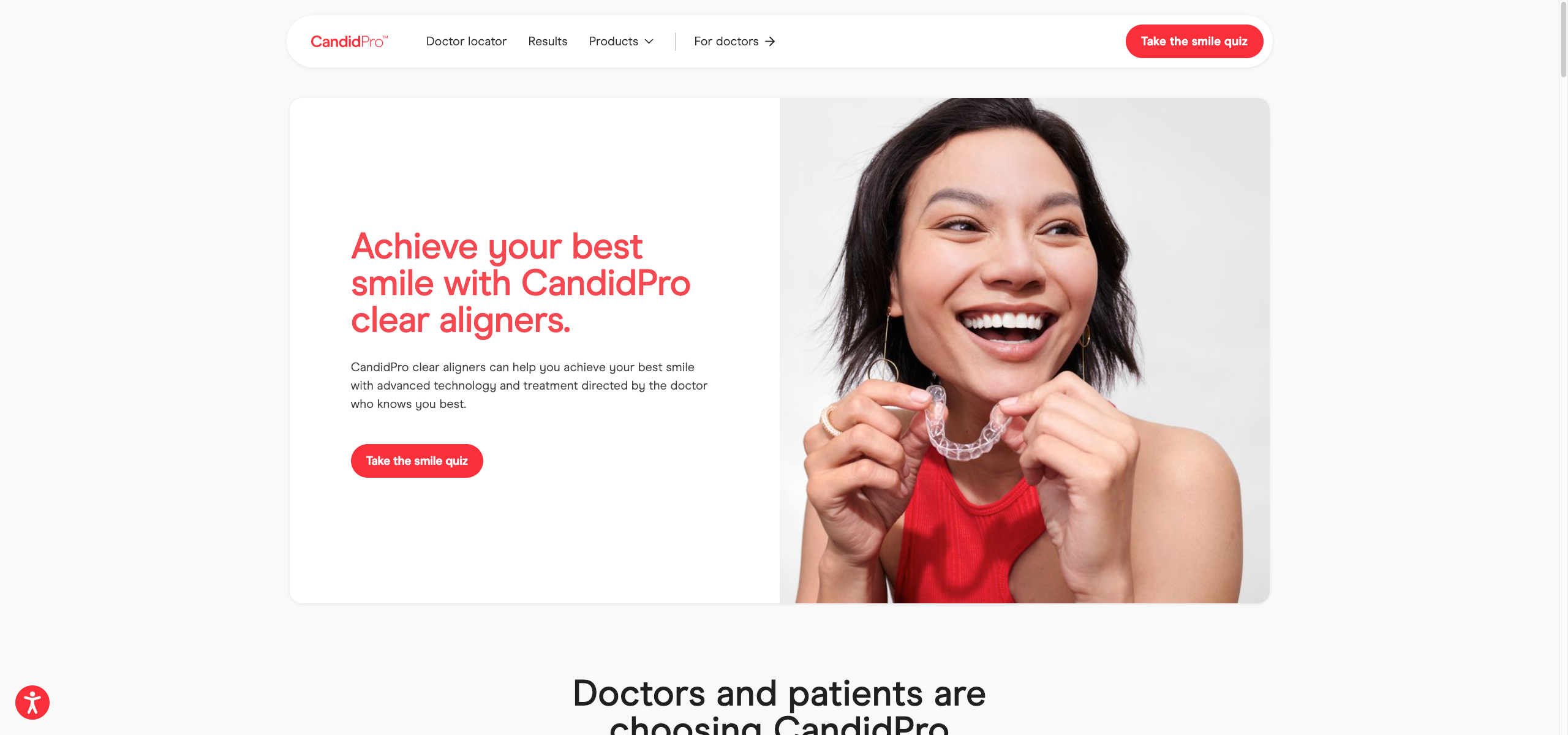
CandidPro takes a slightly different approach to at-home aligners by combining the convenience of remote treatment with the expertise of orthodontists.
How it works?
- You can visit a CandidPro provider to determine eligibility and for diagnostics.
- The CandidPro orthodontist works in conjunction with the CandidPro provider to create your personalized treatment plan.
- You'll receive your aligners with CandidPro's monitoring technology, CandidMonitoring, which allows your orthodontist to track your progress remotely.
- Your CandidMonitoring is overseen by a CandidPro orthodontist and the prescribing CandidPro provider.
Pros
- Orthodontist-directed treatment: Your treatment is overseen by a licensed orthodontist.
- Remote monitoring: Reduces the need for frequent in-person appointments.
- Convenience: Straighten your teeth with monitoring from home.
- Clear aligners: Discreet and comfortable to wear.
Cons
- It may be more expensive than other at-home options: CandidPro's orthodontist-directed approach may come at a higher cost.
- Not suitable for all cases: Best for mild to moderate orthodontic issues. See what kinds of cases CandidPro can treat here.
Use Movemints with your CandidPro aligners to help seat them properly and keep your treatment progressing smoothly. They're a great way to freshen breath and ensure your aligners are doing their job.
5. AlignerCo
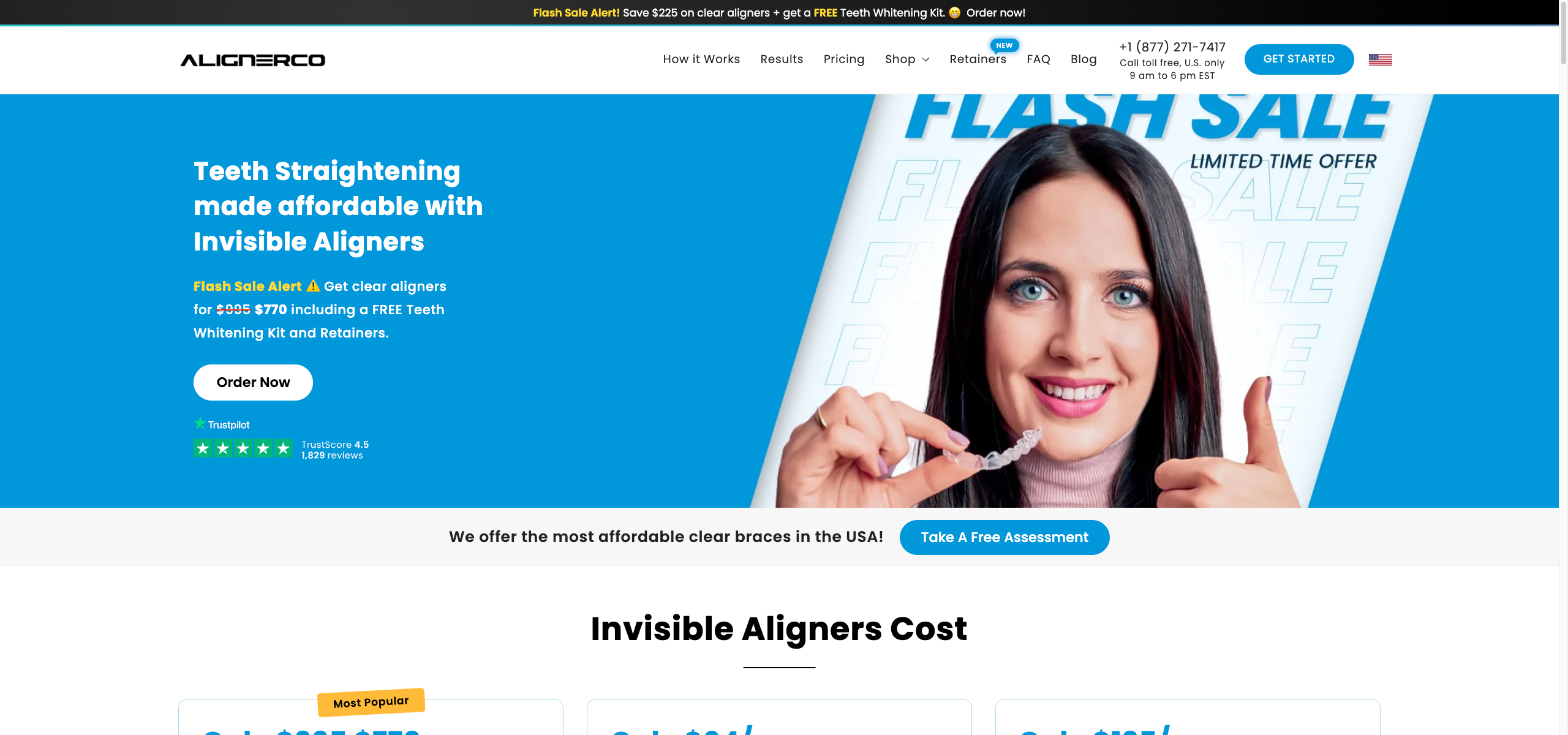
AlignerCo is the best orthodontic treatment that focuses on providing a more affordable alternative to Invisalign without sacrificing quality. They offer a completely remote treatment option, making it convenient for those with busy schedules.
How it works?
- You'll start by ordering an impression kit to create molds of your teeth at home.
- AlignerCo's team of dental professionals will create a personalized treatment plan based on your impressions.
- You'll receive a series of clear aligners designed to gradually shift your teeth into place.
- You'll wear each set of aligners for about two weeks, with remote monitoring and support from AlignerCo's team.
Pros
- Affordability: AlignerCo offers one of the most budget-friendly clear aligner treatments.
- Convenience: Straighten your teeth from home with no in-person appointments.
- Night-only option available: For those who prefer to wear aligners primarily while sleeping.
Cons
- Limited in-person supervision: You'll primarily interact with the dental team remotely.
- Best for mild to moderate cases: It may not be suitable for complex orthodontic issues.
To ensure your AlignerCo aligners fit snugly and comfortably, use Movemints to help seat them properly. Plus, they'll freshen your breath and make your aligner experience more enjoyable.
6. Byte
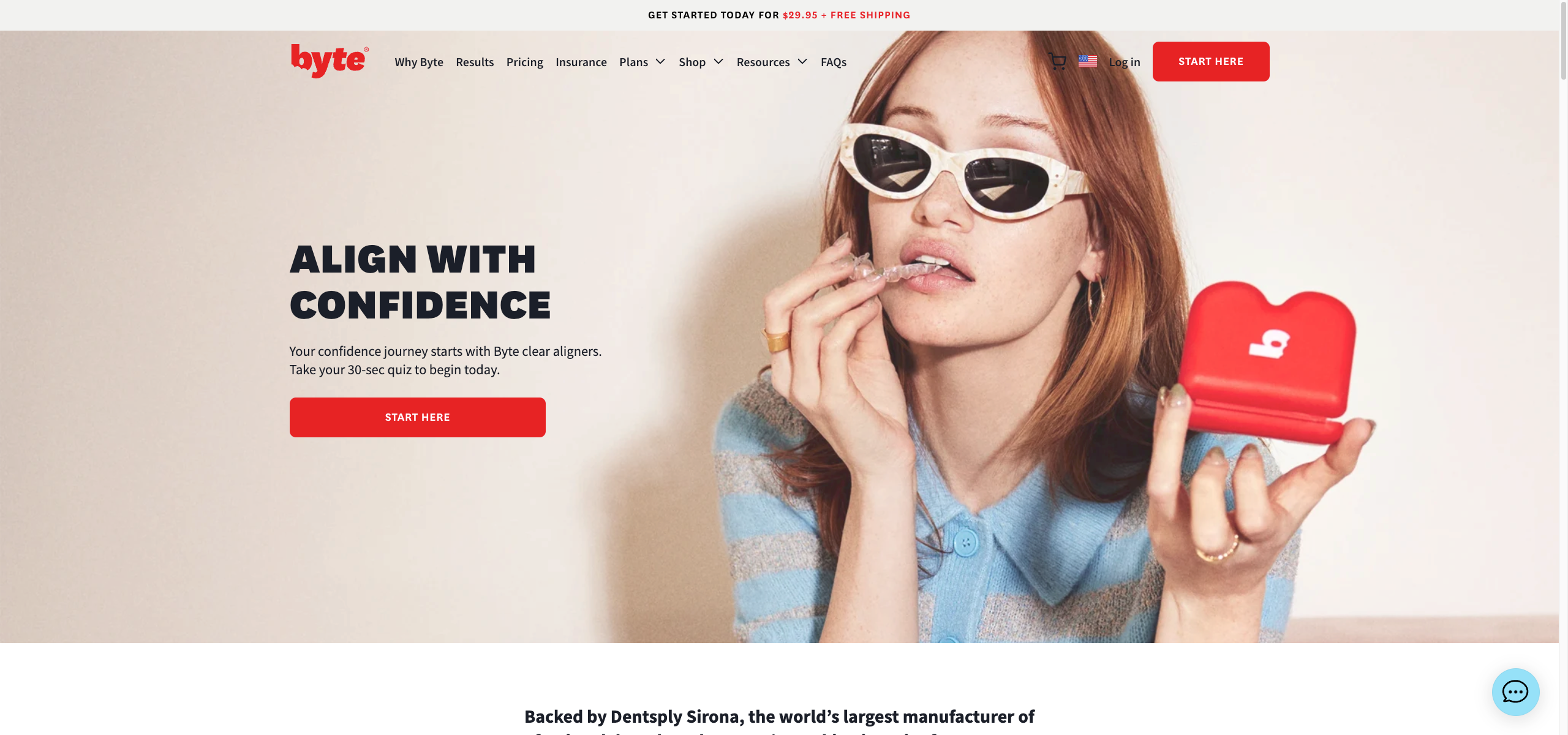
Byte is an ideal Invisalign alternative that is a popular at-home aligner company that offers a convenient and affordable way to straighten your teeth. They're known for their fast treatment times (typically around 5 months with their HyperByte device) and focus on customer experience.
How it works?
- You'll start by ordering an impression kit to make molds of your teeth.
- Byte's team of orthodontists will then create a personalized treatment plan and send you a series of clear plastic trays.
- You'll wear the aligners for 22 hours per day, using their high-frequency vibration device (HyperByte) for 5 minutes a day to speed up treatment and reduce discomfort.
- Throughout the process, you'll have access to Byte's team of dental professionals through their app for support and guidance.
Pros
- Fast treatment: Byte's HyperByte device can significantly reduce treatment time.
- Convenience: Straighten your teeth from the comfort of your own home.
- Affordability: Byte offers clear aligners at a lower cost than Invisalign.
- Night aligners available: Byte offers a night-only option for those who prefer to wear their aligners while they sleep.
Cons
- Not suitable for complex cases: Byte is best for mild to moderate cases.
- Requires discipline: You're responsible for wearing the aligners correctly and keeping up with your treatment plan.
Want to make those Byte aligners even more comfortable? Pop in some Movemints before you put on your trays. They'll help seat the aligners properly and make the whole experience a breeze.
How to Choose the Best Alternative for Your Smile

With so many Invisalign alternatives, how do you pick the right invisible braces? It's like choosing ice cream flavors - so many delicious options, but you want the one that satisfies your cravings. Here's how to find your perfect match:
- Consider your budget: At-home aligners are generally the most affordable, while options like lingual braces or SureSmile may be more expensive.
- Think about your lifestyle: Do you need a "set it and forget it" solution like traditional braces, or are you okay with the commitment of removable aligners?
- Factor in the complexity of your case: For mild to moderate cases, at-home aligners or clear aligners like ClearCorrect might be suitable. For more complex issues, traditional braces or SureSmile might be necessary.
- Prioritize comfort: Consider your comfort level with different types of braces or aligners.
- Think about aesthetics: If you want the most discreet option, lingual braces or clear aligners are the way to go.
- Consult with an orthodontist: An orthodontist can assess your needs and recommend the best treatment options for you.
Pro Tip: No matter which option you choose, Movemints can be your ultimate tool for a more comfortable and effective treatment. They're designed to work with all types of aligners and braces, helping to seat them properly, freshen breath, and keep your mouth feeling clean.
Ultimately, the best Invisalign alternative is the one that best suits your individual needs, preferences, and lifestyle. Don't hesitate to ask your orthodontist or dentist questions and explore all your options before making a decision.
FAQs about Invisalign Alternatives
What's the best alternative to Invisalign?
There's no single "best" alternative, as it depends on your individual needs and preferences. However, some popular options include:
- Clarity Aligners: Developed by 3M, these aligners offer precise tooth movement and are administered by qualified orthodontists.
- Byte: Known for its fast treatment times and high-tech approach.
- SureSmile: Offers precise tooth movement with advanced technology.
- ClearCorrect: A comparable product to Invisalign, often at a lower cost.
- Candid: Combines the convenience of at-home treatment with the expertise of orthodontists.
What is the least expensive way to straighten teeth?
At-home aligners like Byte and AlignerCo are generally the most affordable options for teeth straightening. Traditional metal braces can also be a cost-effective choice, especially for complex cases.
Is there anything faster than Invisalign?
Yes. Byte claims to offer faster treatment times than Invisalign, thanks to its HyperByte device, which uses high-frequency vibrations to accelerate tooth movement.
Is ClearCorrect cheaper than Invisalign?
Yes, ClearCorrect is often less expensive than Invisalign. However, the exact cost will depend on your specific treatment plan and the provider you choose.
Straighten Up Your Smile (Without Invisalign)
There are five fantastic alternative clear aligners to Invisalign. Whether you're looking for affordability, convenience, or a different approach to straightening your teeth, you have options. The best choice depends on your individual needs and preferences. So do your research, talk to your dentist or orthodontist, and choose the path that leads to your happiest, healthiest smile.
Here are the key takeaways:
- Invisalign is a popular teeth-straightening option, but it's not the only one.
- Alternatives include at-home aligners, traditional braces, and other clear aligner brands.
- Consider your budget, lifestyle, and treatment needs when choosing an alternative.
- Consult with an orthodontist to determine the best option for your individual needs.
Speaking of making the right choice, don't forget about Movemints. Whether you go with Invisalign or another aligner system, these little mints can make a big difference in your comfort and treatment progress. They're the perfect sidekick for your smile journey.


